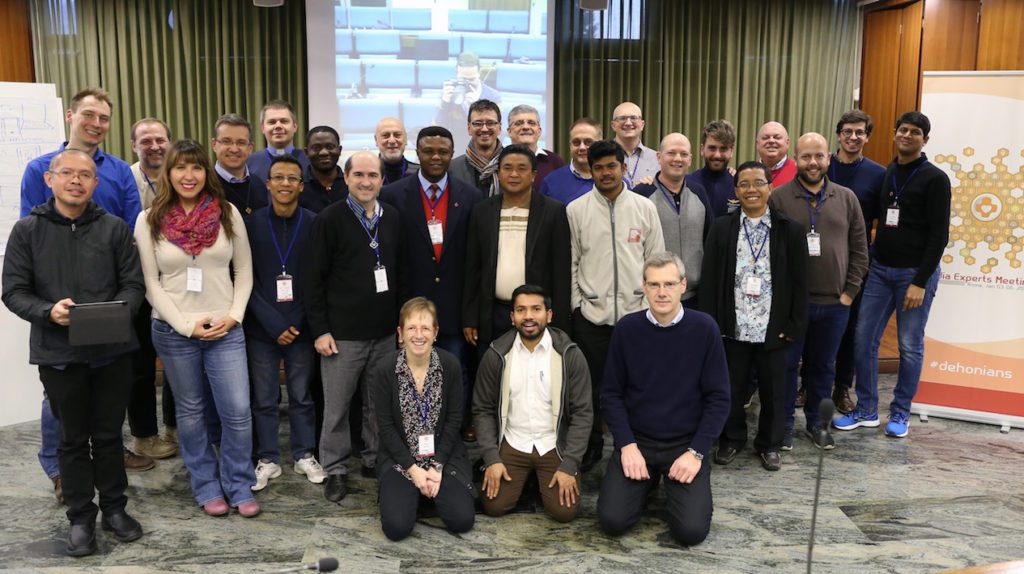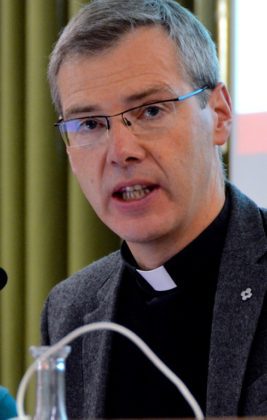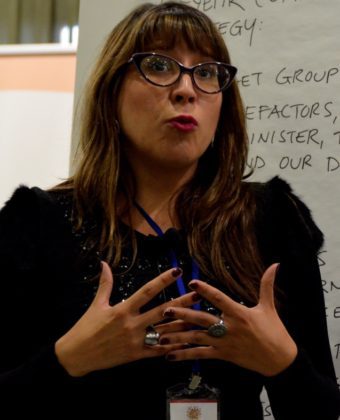
“Who are we, what do we do and why?”
These are questions, said Fr. Heiner Wilmer, superior general of the Priests of the Sacred Heart, which the congregation’s general administration has been trying to answer since it took office.
Or was that the general administration of the Dehonians? The Sacred Heart Fathers? Perhaps it was the Reparadores?

“Around the world we are known by at least 21 different names,” said Fr. Heiner.
Could this be the time to choose a common name? A common logo? A common “brand” for the congregation founded by Fr. Leo John Dehon?
If it is, the people to whom Fr. Heiner was speaking would be the ones on the front lines sharing and implementing the congregation’s public identity: communication professionals –– SCJs and lay –– representing entities from around the world. Approximately 25 communicators gathered in Rome January 3-6 for the “Media Experts Meeting,” a communications workshop.
The upcoming year will be one in which the congregation hopes to create a common identity in words and symbols: a common name, a common logo, a common mission statement.

Diversity toward a common goal –– that, in a nutshell, summed up the meeting.
Participants represented a wide variety of needs, resources and skill levels. A few entities, such as the Spanish Province, have a well-integrated, multi-platform communications plan. Others struggle to develop consistent communications in areas of the world where electricity, much less internet connections, are not always reliable.
“We come together this week to get to know each other, to learn from one another,” said Fr. Heiner. “We want to hear your voices and acknowledge each of our unique situations and conditions.”
And in those “unique situations and conditions” emphasized Fr. Heiner, the congregation needs to find a common communications strategy.
The next “media experts” meeting will take place May 23-24, 2018.
Click here to access photos from the gathering.
Noted author reflects on Pope Francis’ communication strategy

Marco Politi, author of Pope Francis Among the Wolves, was the opening speaker on the second day of the Dehonian Media Workshop. His topic centered on Pope Francis’ communication strategy.
Mr. Politi began by noting that what is significant about Pope Francis is not that he is the first pope from Latin America but that he is the first pope with “a real experience of a global society.”
Buenos Aires, where Jorge Maria Bergoglio was archbishop prior to his selection as pope, is a large, cosmopolitan city. It is a metropolis that includes the “super rich, very rich, middle class, lower middle class, the poor, the desperate and even shanty towns or ‘misery’ towns,” he said.
As archbishop, Jorge Maria Bergoglio could have lived as a prince.
But he didn’t.
As archbishop he took the bus, he lived simply –– and he continues to do so (as simply as a pope can live) –– not because he is from Latin America, but because he is communicating a message.
“Pope Francis stresses that a person can’t have a relationship with God if he doesn’t have a relationship with his neighbor,” said Mr. Politi.
He communicates that message by using images and simple language. Yet underneath his words is often a subtle, sophisticated strategy. The pope’s audience is not just fellow Catholics, he wants to speak –– through words, symbol and action –– to all of society: Christians and those of other faiths, believers and non-believers.
And he has constantly sought to create transparency in the Vatican, as well as the Church, communicating a message of honesty and trust.
Through words and gestures Pope Francis’ consistent communication strategy aims at redirecting the focus of the Church more toward God’s love and mercy, making it a Church of the Beatitudes and the Good Samaritan.
